Discover 15 hidden attractions, cool sights, and unusual things to do in Ludwigsburg (Germany). Don't miss out on these must-see attractions: Schloss Ludwigsburg, Schloss Favorite, and Blühendes Barock. Also, be sure to include Seeschloss Monrepos in your itinerary.
Below, you can find the list of the most amazing places you should visit in Ludwigsburg (Baden-Württemberg).
Table of Contents
Schloss Ludwigsburg
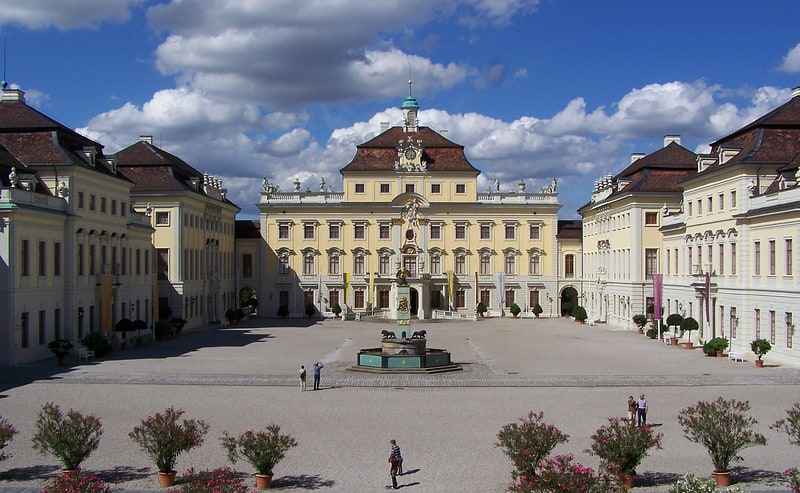
Also known as: Residenzschloss Ludwigsburg
Museums and parkland at a baroque palace. Ludwigsburg Palace, nicknamed the "Versailles of Swabia", is a 452-room palace complex of 18 buildings located in Ludwigsburg, Baden-Württemberg, Germany. Its total area, including the gardens, is 32 ha – the largest palatial estate in the country. The palace has four wings: the northern wing, the Alter Hauptbau, is the oldest and was used as a ducal residence; the east and west wings were used for court purposes and housing guests and courtiers; the southern wing, the Neuer Hauptbau, was built to house more court functions and was later used as a residence.
Eberhard Louis, Duke of Württemberg, appointed Philipp Joseph Jenisch to direct the work and construction began in 1704. In 1707, Jenisch was replaced with Johann Friedrich Nette, who completed the majority of the palace and surrounding gardens. Nette died in 1714, and Donato Giuseppe Frisoni finished much of the palace façades. In the final year of construction, Eberhard Louis died and the Neue Hauptbau's interiors were left incomplete. Charles Eugene's court architect, Philippe de La Guêpière, completed and refurbished parts of the New Hauptbau in the Rococo style, especially the palace theatre. Charles Eugene abandoned the palace for Stuttgart in 1775. Duke Frederick II, later King Frederick I, began using Ludwigsburg as his summer residence in the last years of Charles Eugene's reign. Frederick and his wife Charlotte, Princess Royal, resided at Ludwigsburg and employed Nikolaus Friedrich von Thouret to renovate the palace in the Neoclassical style. Thouret converted much of Ludwigsburg's interiors over the reign of Frederick and later life of Charlotte. As a result of each architect's work, Ludwigsburg is a combination of Baroque, Rococo, Neoclassical, and Empire style architecture.
The constitutions of the Kingdom and Free People's State of Württemberg were ratified at Ludwigsburg Palace, in 1819 and 1919 respectively. It was the residence for four of Württemberg's monarchs and some other members of the House of Württemberg and their families. The palace was opened to the public in 1918 and survived World War II intact. It underwent periods of restoration in the 1950s, 1960s, and 1990s and again for the palace's 300th anniversary in 2004. The palace had more than 350,000 visitors in 2017 and has hosted the Ludwigsburg Festival every year since 1947.
Surrounding the palace are the Blooming Baroque (Blühendes Barock) gardens, arranged in 1954 as they might have appeared in 1800. Nearby is Schloss Favorite, a hunting lodge built in 1717 by Frisoni. Within the palace are two museums operated by the Landesmuseum Württemberg dedicated to fashion and porcelain respectively.[1]
Address: Schlossstr. 30, 71634 Ludwigsburg
Schloss Favorite
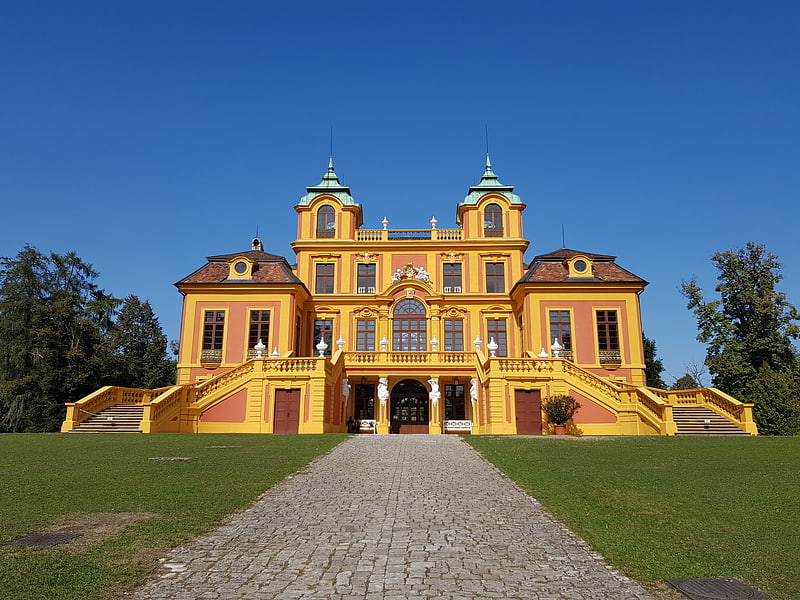
Historical landmark in Ludwigsburg, Germany. Schloss Favorite is a Baroque maison de plaisance and hunting lodge in Ludwigsburg, Germany and was used as a summer residence and hunting lodge. It is located on a rise, directly north of Ludwigsburg Palace and connected via an avenue to it.[2]
Address: Favoritepark 1, 71634 Ludwigsburg
Blühendes Barock
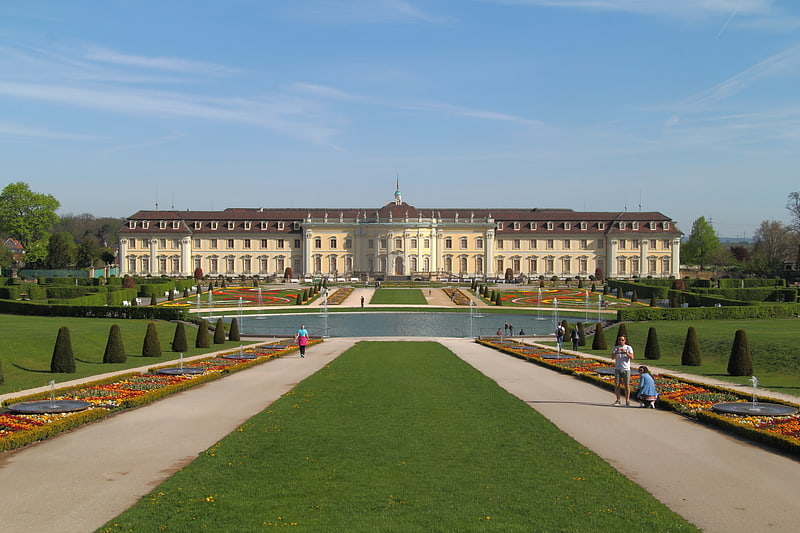
The gardens around the Residence Palace in Ludwigsburg in Baden-Württemberg are known as the Blühendes Barock.
Address: Mömpelgardstraße 28, 71640 Ludwigsburg
Seeschloss Monrepos

Historical landmark in Ludwigsburg, Germany. Monrepos is a lakeside schloss in Ludwigsburg, Germany. Although quite far and almost separate from Favorite Palace and Ludwigsburg Palace, it is connected to the rest of the grounds by way of pedestrian paths. It is one of the two minor palaces on the estate, along with the main one. The smaller ones were used as hunting lodges.
Of all three, this is the only one that is still owned by the royal family of Württemberg after its overthrow in 1918. Much of the privately owned land surrounding Monrepos is now an 18-hole golf course, unlike the state-owned part, which is made up of parks and museums.
Since the 16th century, the Dukes of Württemberg enjoyed hunting along the Eglosheimer Lake. In 1714, Duke Eberhard Ludwig had an octagonal pavilion, the Seehäuslein ("Little Lake House"), constructed on the northern shore.[3]
Address: Monrepos 26, 71634 Ludwigsburg
MHPArena

Sports arena in Ludwigsburg, Germany. Arena Ludwigsburg, also known as MHPArena, is an indoor sporting arena that is located in Ludwigsburg, Germany. The seating capacity of the arena for basketball games is 5,325 spectators.[4]
Address: Schwieberdinger Str. 30, 71636 Ludwigsburg
Schlosstheater Ludwigsburg

Theatre in Ludwigsburg, Germany. Schlosstheater Ludwigsburg is a theatre in Ludwigsburg, Baden-Württemberg, Germany.[5]
Stadtkirche Ludwigsburg

Church
Address: Stadtkirchenpl. 6, 71634 Ludwigsburg
Kirche zur heiligsten Dreieinigkeit
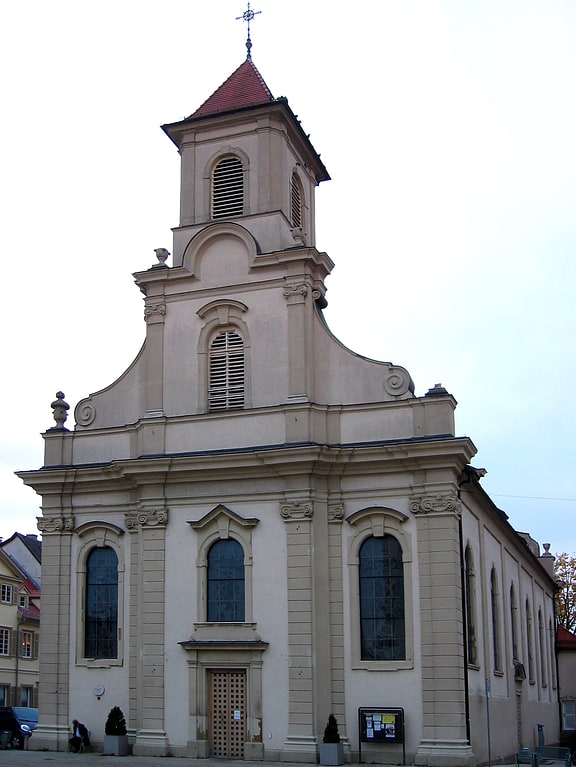
Church
Address: Bei der Katholischen Kirche 5, 71634 Ludwigsburg
Heilbronner Torhaus
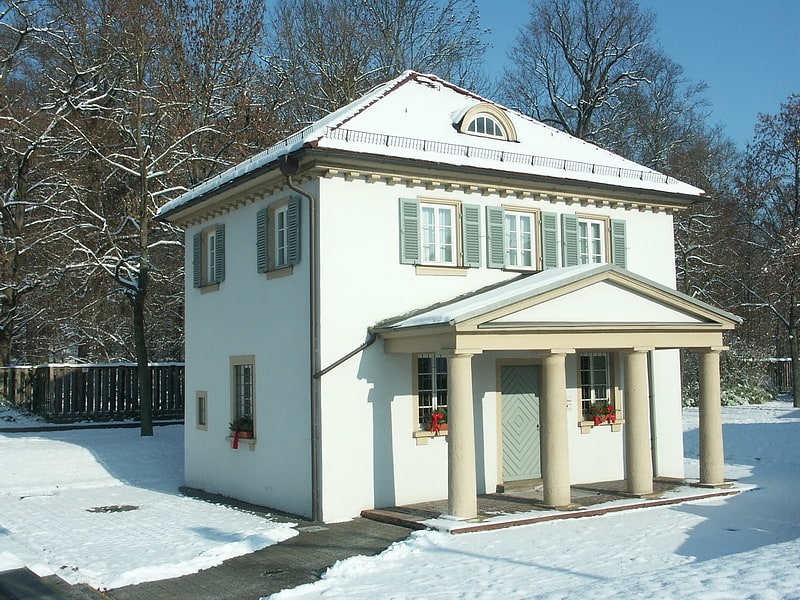
Address: 52 Schlossstraße, Ludwigsburg
Wüstenrot Tower
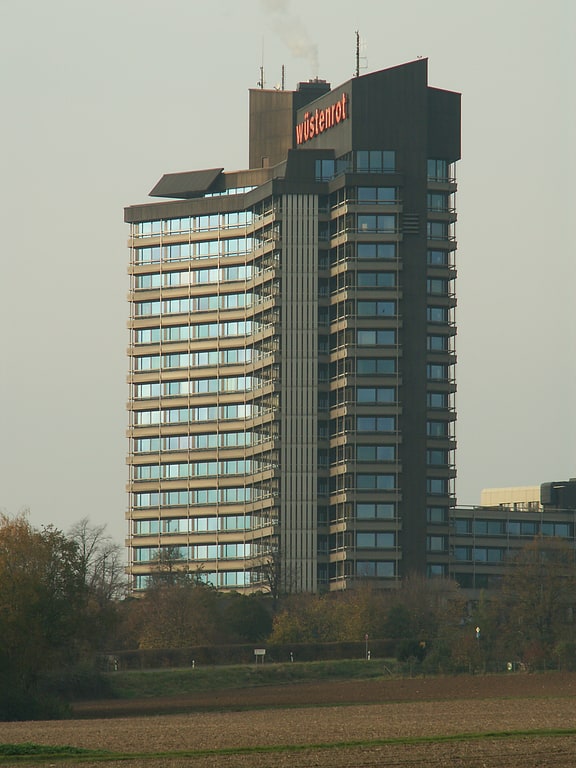
Also known as: Wüstenrot-Hochhaus
Building. The Wüstenrot Tower is the central office building of GdF Wüstenrot, a German building and loan association, in Ludwigsburg. It was designed by architect Prof. Ludwig Kresse in Stuttgart. The address of the 72 metres tall building is Im Tambour 1, 71630 Ludwigsburg.
Wüstenrot Tower is the tallest habitable building of Ludwigsburg and also one of the tallest high-rise buildings in Stuttgart area. It has 6 elevators with a capacity of 11 persons each and a freight elevator, which carries up to 1950 kilograms. Wüstenrot Tower is a modern landmark of Ludwigsburg and by its site at the southern edge of Ludwigsburg far visible.[6]
Address: Wüstenrotstr. 1, Ludwigsburg
Emichsburg

The Emichsburg is a structure in the eastern garden of the Blühender Barock in Ludwigsburg.
Emichsburg Castle was built between 1798 and 1802 according to plans by Nikolaus Friedrich von Thouret in the east garden of Ludwigsburg Palace, today's Blossoming Baroque, in the medieval style over a former quarry. It is considered the main work in the English garden area and was built according to the ideas of Duke Frederick II of Württemberg during the redesign of this garden area. It is named after Emicho, the brother of Count Ludwig I who was mentioned in documents in the 12th century. Today, Emichsburg Castle is used as the Rapunzel Tower in the fairytale garden of the palace park.
Church of Peace
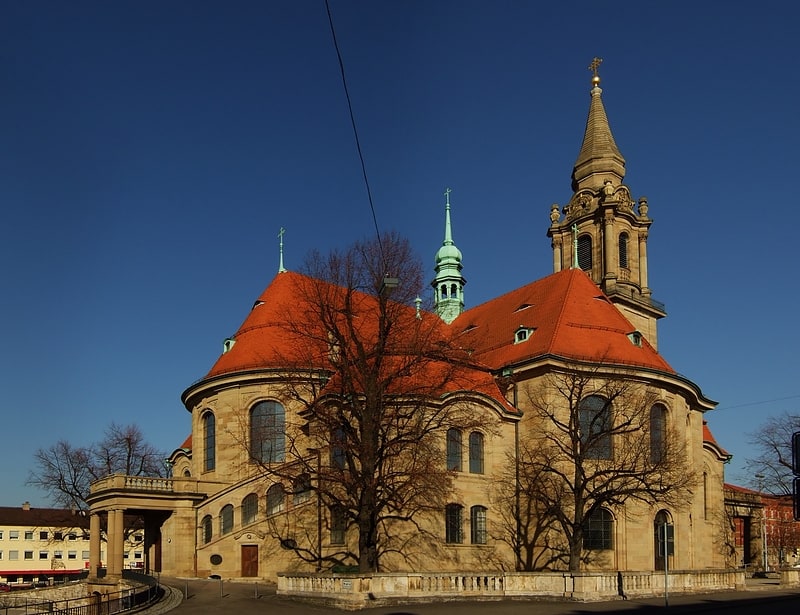
Friedenskirche is a Protestant church in Ludwigsburg, Württemberg. It was built as a garrison church by the Munich architect Friedrich von Thiersch in the period from December 27, 1900 to March 31, 1903.
The neo-Baroque building has a ceiling fresco about 20 m above the church floor, the bell tower faces east and is 66.8 m high.
Address: Stuttgarter Str. 42, 71638 Ludwigsburg
Favoritepark
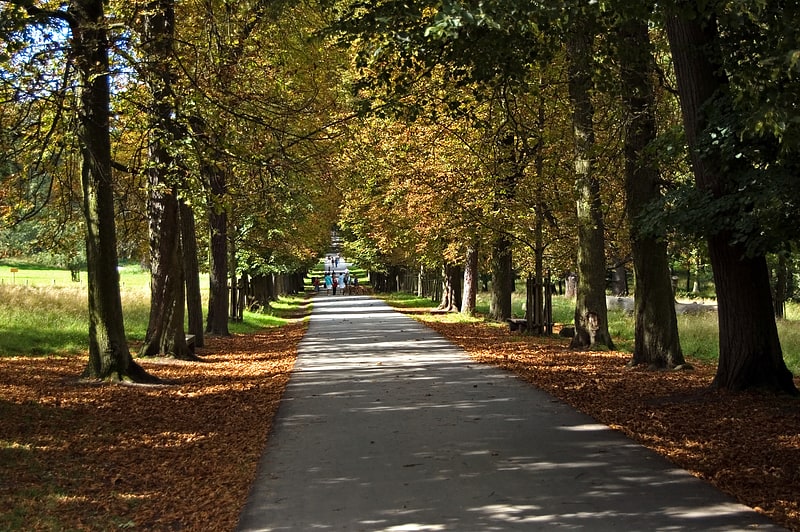
Favoritepark is a park in Ludwigsburg that surrounds Favorite Palace. Once used as a pheasantry, it is now a popular excursion destination and recreation area, with around 150,000 visitors annually. It has been a nature reserve since 1937, making it the oldest in the Ludwigsburg district.
Address: Favoritepark 5, Ludwigsburg
Bärenwiese
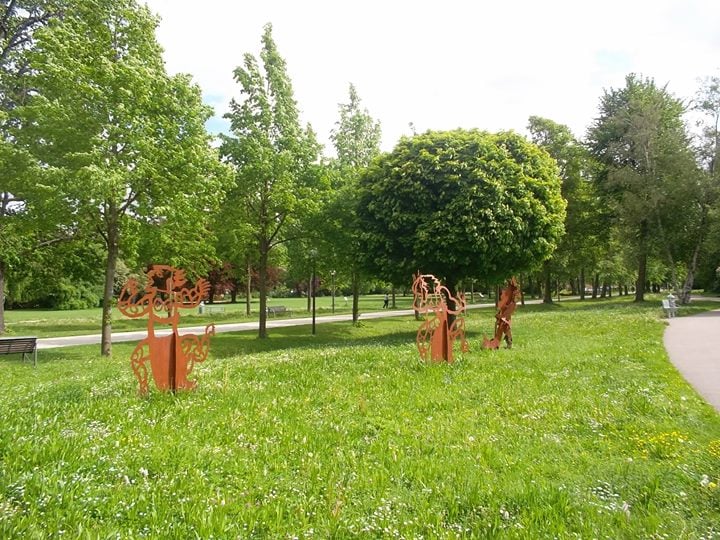
Park, Relax in park
Address: Schorndorfer Straße 997, Ludwigsburg
Franco-German Institute
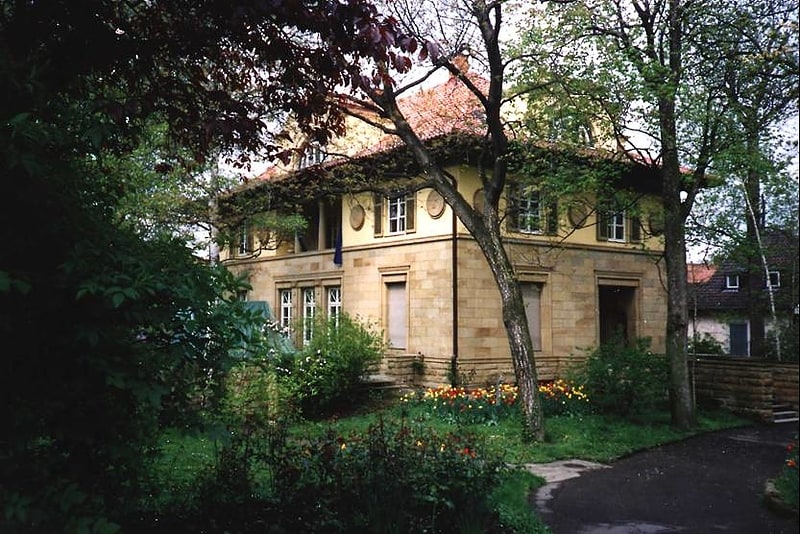
Also known as: Deutsch-Französisches Institut
Non-profit organization. The Deutsch-Französisches Institut is an independent non-profit organization devoted to research on and documentation of contemporary Franco-German relations.
The institute is funded by the German Foreign Office, the regional government of Baden-Württemberg and the town of Ludwigsburg. Projects are also funded by external partners.[7]